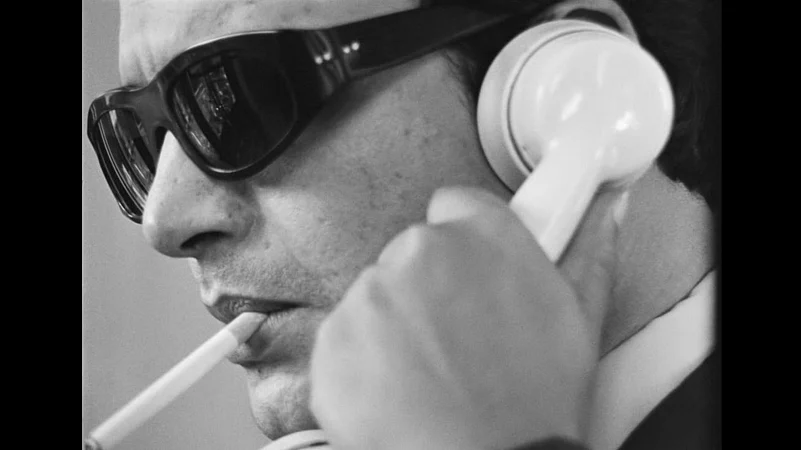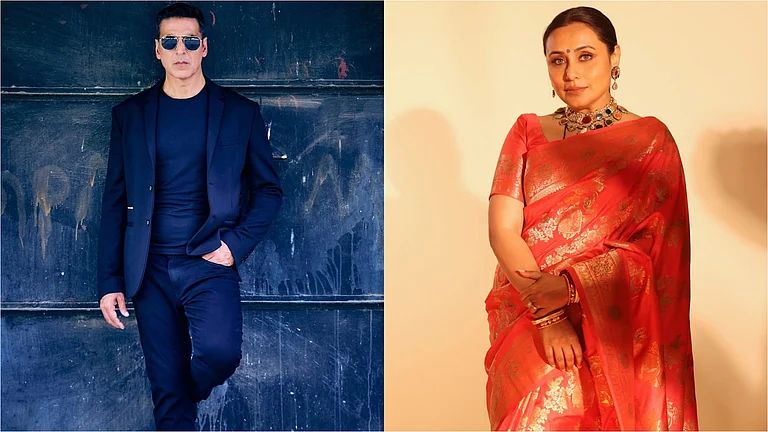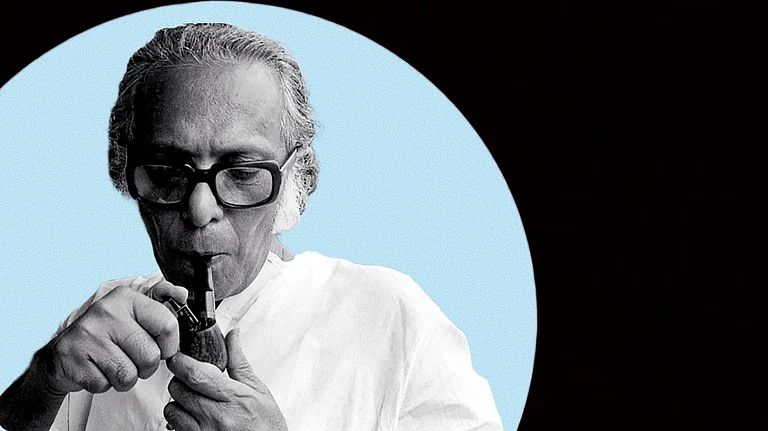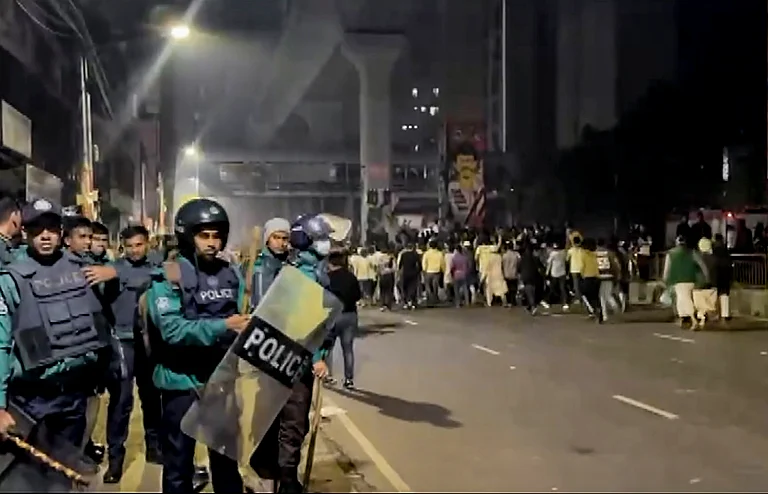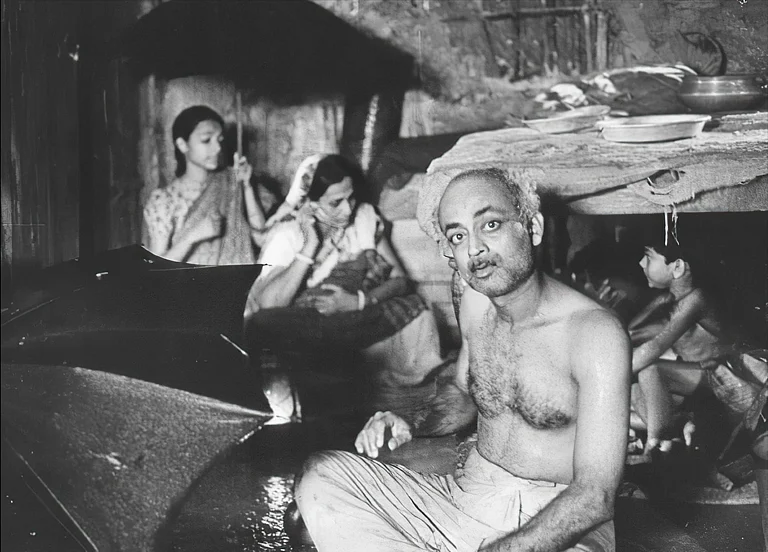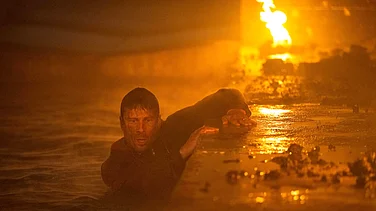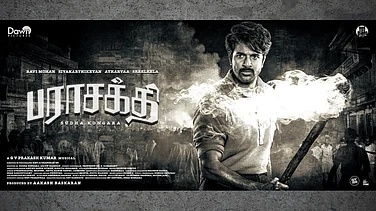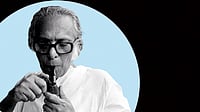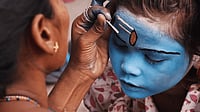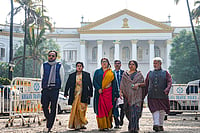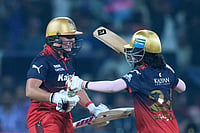As someone born almost a decade and a half after Uttam Kumar’s death, I should have been immune to his charm. We, who are too far removed from the soft-focus romance of the black-and-white era, too soaked in cynicism to believe that charm could still mean anything in a world of “benching,” “negging,” and breadcrumb trails mistaken for intimacy—what does he have to do with our lives now? Yet, the nearest metro station to my house in Kolkata is named after him, and we are still making movies using archival footage of his films to bring him alive on the screen, employing AI-driven VFX (Oti Uttam, 2024).
“One Mahanayak Uttam Kumar,” we often say at the ticket counter, to reach Tollygunge metro station, as if they are tickets to a time capsule. At the stop, his face waits across the walls—handsome in an unhurried way. I inherited my love for Uttam Kumar from my grandmother, who, while pirouetting back and forth to set the dinner table, would sing songs from his films: sometimes, it was “Gaane bhubon bhoriye debe”; at other times, “Madhobi modhupey holo mitali” (what in the alliteration!). I, like a parrot, memorised the lyrics, long before I saw him mouth them on our black-and-white TV—the one with an antenna that needed fixing every now and then. The screen used to flicker, the sound used to be muffled with occasional white noise until you fixed the antenna and hoped for the stars to align, but there he was, gently glorious. He was mouthing the Shyamal Mitra’s song Gaane Bhubon as the famous singer and music composer Prasanta Roy, revealing his identity to the world to help raise money for his friend suffering from tuberculosis. The same friend who wrote the song about a (metaphorical) bird that had dreamt of singing, but was struck by an arrow. The film was Deya Neya (1963), and you believed everything he said, did, and was onscreen. No wonder the Golden Era of Bengal and Uttam Kumar go hand in hand.
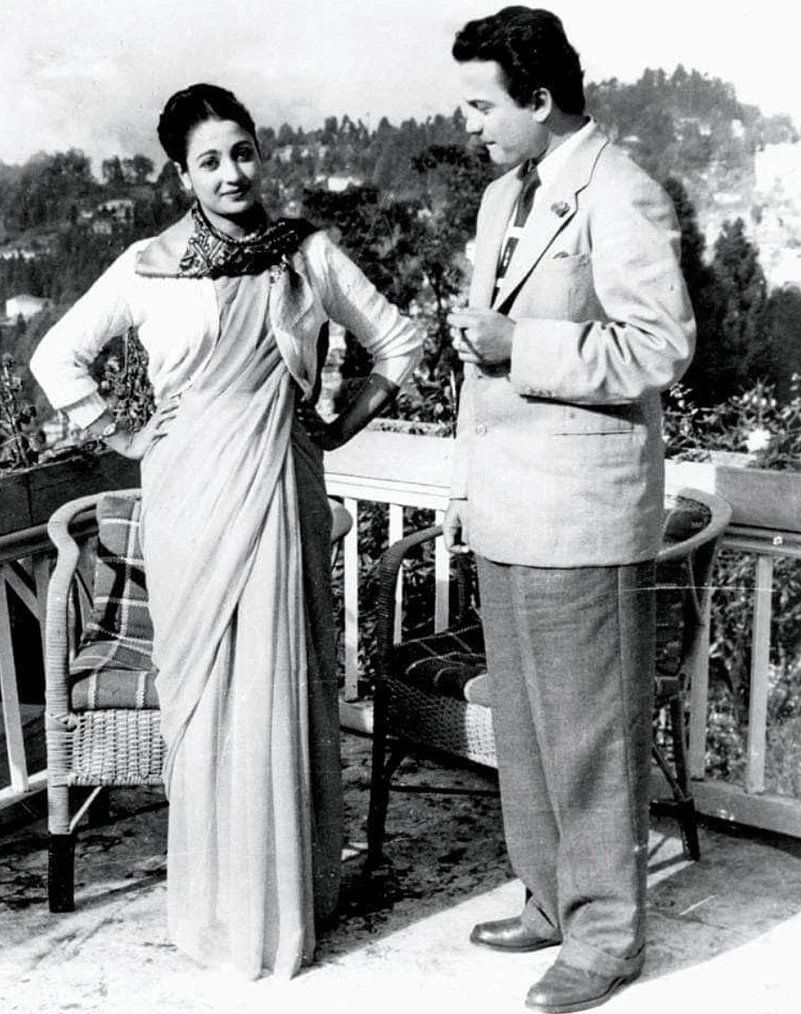
Uttam Kumar and the Golden Era of Bengali Cinema
Uttam Kumar rose to stardom in early 1950s—in a Bengal that was still nursing the Partition wound that hadn’t even closed, let alone healed. In that uncertain, in-between time of grief and uprootedness, he arrived not just as a romantic lead but as the hope of a proposition: that life, even fractured, could be lived with absolute grace. That desire could be soft, and masculinity could be defined without the pithy performance of ruggedness. He did not play the angry young man lashing out against the world, or the hypermasculine hero beating up baddies like swatting flies. He was gentle, therefore, believable.
On screen, he belonged to the world of bookshops, tram rides, tea stalls, driving through Kolkata streets in vintage cars, and shared glances over chance encounters. He was the poor man falling in love with a rich woman (Pathey Holo Deri, 1957); or a rich music director pretending to be an unemployed driver because he liked the owner of the car (Deya Neya, 1963); or an artist running an orphanage (Har Mana Har, 1972); a politician rising and falling through corruption (Bagh Bondi Khela, 1975); or perhaps even a celebrated “matinee idol” in a drunken stupor, stuck in a train and confessing the regrets of his life to a stranger (Nayak: The Hero; 1966). His popularity didn’t stem from his looks (though those helped) or his acting skills (that was undeniable) alone; it came from the roles he chose to play in the films he acted in and later produced, and how the world those roles inhabited made his viewers feel. In him, post-Partition Bengal found a mirror, reflecting the kind of hope it desperately needed.
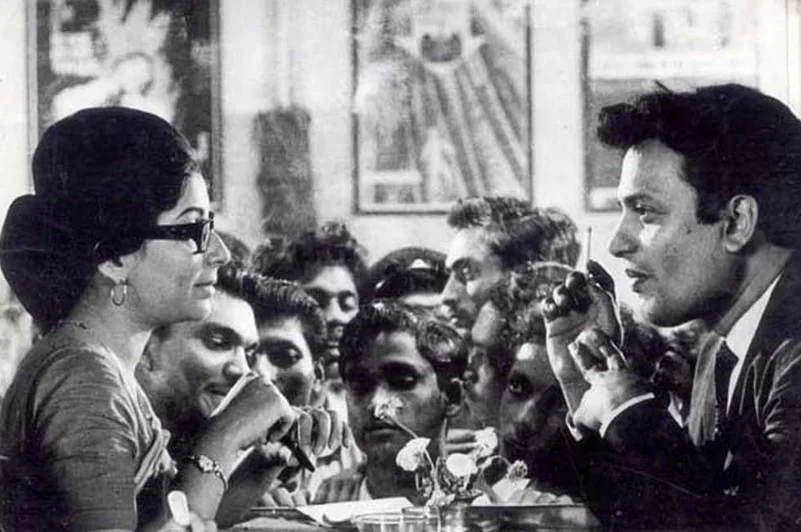
At the height of his career, cinema as a medium was also undergoing a rapid technical metamorphosis. The black-and-white era, with all its chiaroscuro charm, was giving way to Gevacolor—one of the earlier color film technologies developed by a Belgian company. While Satyajit Ray’s Kanchenjungha (1962) was the first Bengali film to be entirely shot using Gevacolor, Uttam Kumar’s Pathe Holo Deri (1957) was the first to incorporate the technology, with portions of the film being shot in color. His later films, like Amanush (1974), and Ogo Bodhu Sundari (1981) were also shot in color. The arrival of color demanded new ways of framing scenes, designing sets, and imagining emotions. Uttam Kumar stood at the very intersection of that technological shift, effortlessly transitioning from the greys of nostalgia to the varicoloured tones of modernity.
The (only) One
While it might be considered an unpopular opinion, Satyajit Ray’s Chiriyakhana (1967), where Uttam Kumar plays the role of Byomkesh Bakshi—a famous detective brought to the screen from Saradindu Bandyopadhyay’s novels—is my favorite Uttam Kumar performance. When Byomkesh, played by Uttam Kumar, visits Golap Colony at the request of its owner—who suspects something sinister is taking place on the premises—he disguises himself as a Japanese tourist named Mr. Okakura. It is hard for me to explain just how incredibly he transforms into a Japanese tourist, asking everyone he meets for a photograph: his get-up, his walk, even his accent shifts. When someone starts speaking to him in Japanese, he pretends to be hard of hearing so he won’t get caught. At this point, it’s hard to believe whether it’s Ray’s screenplay that lends him the scope to perform, or is it his performance that adds a whole other dimension to Ray’s writing. I believe it is a bit of both. In another scene, while interrogating his suspects, Byomkesh is busy doing kirigami. He is both paying attention and not, and I cannot imagine another actor—ever—pulling off that level of casual versatility.
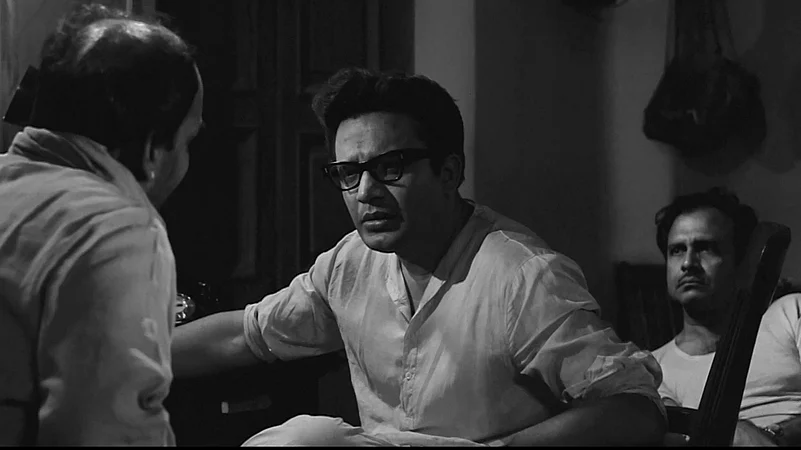
In the same way, I cannot imagine anyone but Kumar performing the scene in Nayak: The Hero (1966), where a child—who had been friendly with him on the train—runs away when she finds him inebriated, his eyes barely open and his speech slurred. He frightens her, and when he realises that, he becomes both scared and scarred. His face turns visibly pale in a close-up shot, as if he, too, would like to run away from himself, if he could. So much is conveyed in a split second—without a single word.
What stands out in Kumar’s performances is how, for decades, he brought to life vulnerable, emotionally intelligent men on screen, with his presence, pause, and dignified demeanor. He became an integral part of the Bengali imagination of love and romance through the kind of cinema that carefully captured post-independence Bengali aspirations, balancing tradition and modernity. With studios experimenting with colour and Bengali films gaining prominence both nationally and internationally, one almost feels nostalgic for a time when the Bengali film industry had not yet felt the hierarchical sting of being considered “regional.” A time when Uttam Kumar was riding a motorcycle with Suchitra Sen on the back, singing “Ei poth jodi na sesh hoy” (“What if the road never ended”), and it felt like all was well with the world, and the Bengali film industry had places to go.
Sritama Bhattacharyya has an M.Phil in Women’s Studies from Jadavpur University, Kolkata. She is currently an English Teacher based in Washington.






